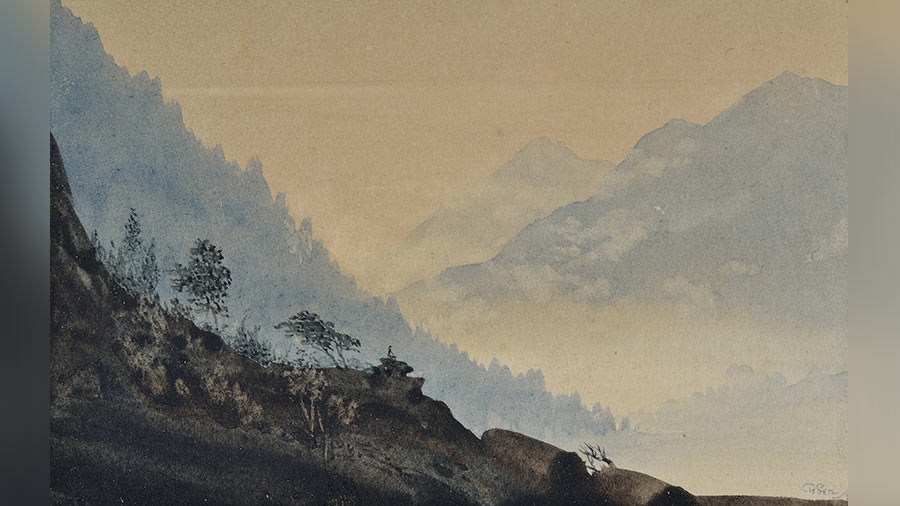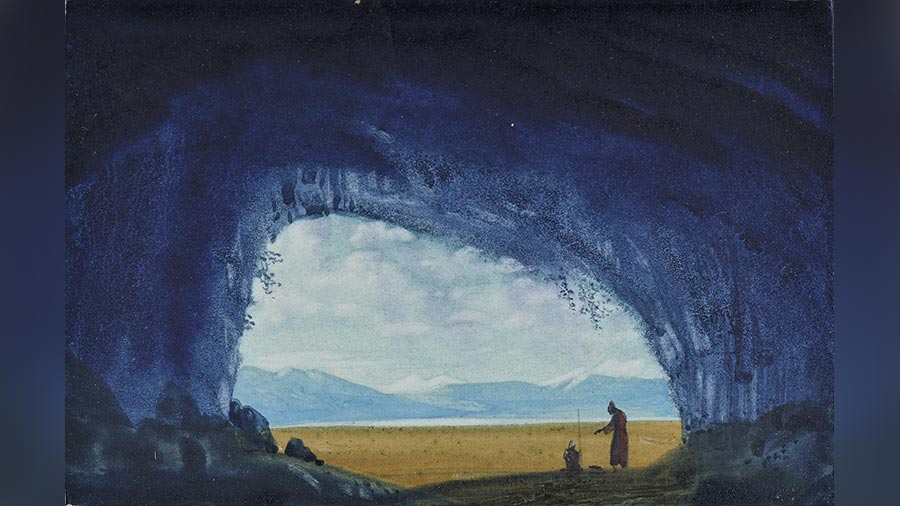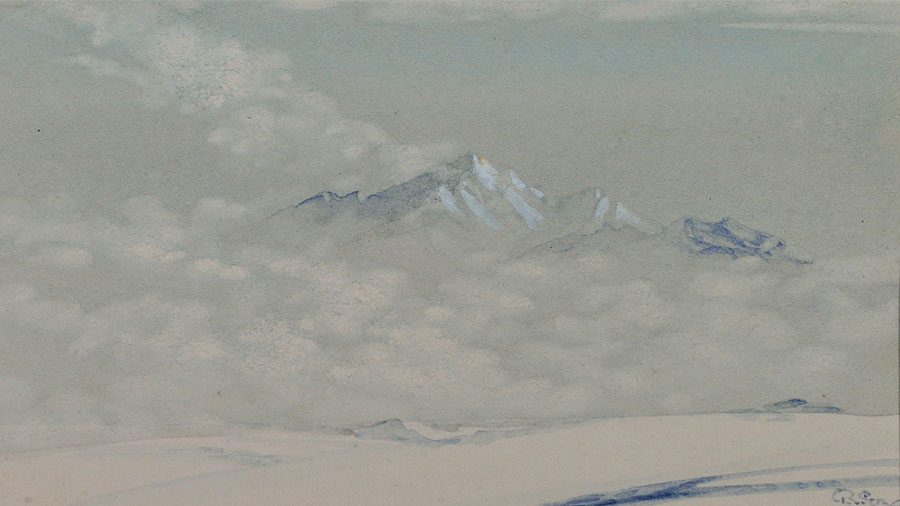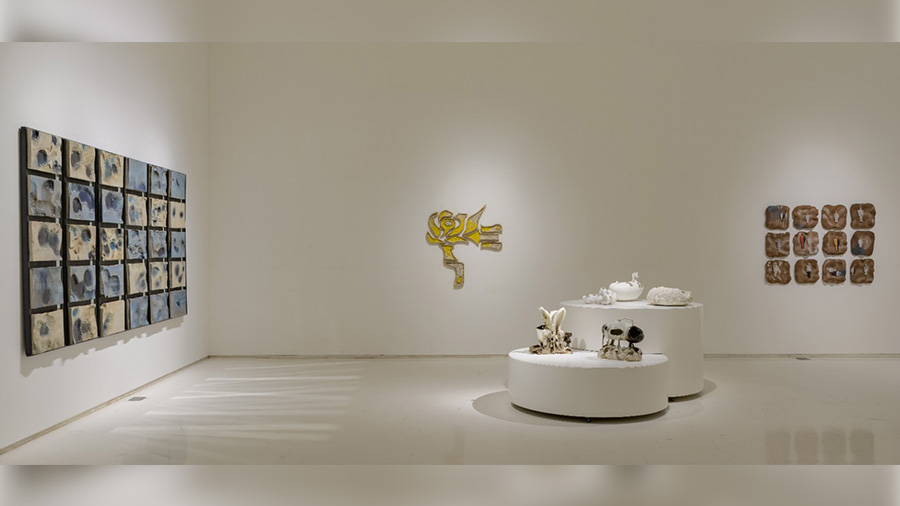Subarna Patro, deputy curator at the National Gallery of Modern Art (NGMA)’s southern headquarters in Bengaluru, grinned broadly as we sipped chai in his office. “Now the city has two mega-museums!” he announced. His own fine museum had been joined by MAP (Museum of Art and Photography), which opened that day. They make a contrasting and complementary pair.
For a start, there is NGMA’s historic building, Manickyavelu Mansion, named after Raja Vilum Manickyavelu Mudaliar. He was one of the city’s early entrepreneurs. Having married well, he bought the splendid white-stuccoed, column-fronted building off the royal Wadiyars of Mysuru early in his career, before going on to make his fortune in mining manganese and chrome ore. Today, mended, enlarged, and open to the public since 2009, NGMA Bengaluru’s lofty, spacious galleries are as good as any purpose-built museum might yearn for, and its tranquil oasis setting beneath ancient spreading trees in the heart of traffic-frenzied Bengaluru would by the envy of almost all. It even has a surprisingly good, if oddball, café.

A view of the gallery
Then, there is the art. The NGMA’s collection, founded in 1954 and stored in Delhi, is phenomenal in size and range, thanks in part to the enthusiastic acquisitions programme encouraged by Indira Gandhi, who had attended Santiniketan in 1934-5. It tells the complex, multi-location, multi-culture stories of modern art in India. This it achieves by staging focused exhibitions in its three locations: Delhi, Mumbai and Bengaluru (and perhaps Kolkata should be one, too?).
Right now, half of NGMA Bengaluru is hosting Sakshi Gallery’s lively ‘Sub-plots: Laughing in the Vernacular’, a rainbow of punchy, often witty contemporary works curated by Meena Vari, in which artists call out the absurdities of life.

Another view of the gallery
In contrast, the other half is dedicated to showing 77 meticulous, miniature watercolours of landscapes, mostly capturing the haunting mystical beauty and stillness of the Himalaya. It is the final stop for a show that started in Delhi in 2017. Each painting measures about 8.5cm by 5.5cm, smaller than a postcard. In otherwise empty spaces, each is hung at eye height, well-spaced from the next. Once you adjust your mindset to looking closely into each one to experience its full force, its ‘rasa’ (the emotional response to art), the cumulative effect is so powerful that the galleries feel full.
They are all by Bireswar Sen, a Bengali artist celebrated in his life, then put in the shadows.
The restoration of an artist
Sen’s revival started in 2010 when the art historian B.N. Goswamy curated a show of his works at NGMA Delhi. It was NGMA Bengaluru that had the idea for this present show, ‘Reflections: Man And Nature In The Paintings Of Bireswar Sen’, says Subarna. Its curator for this final stop is Darshan Kumar, whose additions of Rabindranath Tagore quotes on wall-panels and an entry lobby lined with a big print-out of each landscape, for easy reading, add greatly to the full experience that restores Sen to his place as one of India’s most outstanding landscape artists.

‘Morning Mist’ (watercolour and tempera on paper)
“There has not been a show of his work of this scale,” says Subarna. “He’s a very important Bengali artist, yet little explored. This show gives a new depth of perspective for a whole era.” Landscape watercolour painting was introduced across India in colonial times, he says, and cites the Karnataka artist K. Venkatappa (1886-1965) as an early exponent. A Mysuru court painter who came east to study under Abanindranath Tagore, 1901-16, and whose fellow students included Nandalal Bose, he returned south and later made fine watercolours of his local Nilgiri Hills.

‘The Saint Blessings’ (watercolour and tempera on paper)
It would be fascinating to know if he met Sen, a decade younger but already drawing and painting while he read English Literature at Presidency College. Sen would meet the two Bengali artists in 1917, when he started to train under them at Kolkata’s Indian Society of Oriental Art. He admired the colourist Abanindranath’s washed landscape style and Nandalal’s belief in line and his habit of drawing on small cards and postcards. But the artist who inspired him to focus on landscape and its visional mysticism was the Russian, Nicholas Roerich, who set out for the Himalaya in 1923, staying in Darjeeling to paint the mountains; he would later return to India to live at Naggar in Kullu, host Indira Gandhi as a house-guest, and die there in 1947. Sen met him in 1932 and would exchange letters with him until he died.

‘The Pillar’
Sen mixed painting with a demanding career. In 1923, he was an English lecturer at Bihar National College in Patna. Three years later, he was the headmaster of Lucknow’s Government School of Arts and Crafts, carefully mentoring students and artists. But he regularly slipped away to the mountains to paint their changing lights and moods, their unfathomable majesty, their uncompromising power. One jewel-like painting looks through a menacingly dark frame of mountain silhouettes to a furnace of crimsons where a tiny helmeted figure and his band of men visit a lone saint defined by a nimbus. Sen calls it ‘Warrior and the Saint’. Another, capturing the ethereal glowing pinks and delicate blues of morning mountain light, he calls ‘Morning Mist’, making you feel the dampness as you meditate on it. Another, ‘Virgin Snow’, depicts primordial nature: fluffy little clouds around and above some jagged mountain peaks.

‘Virgin Snow’
Sen’s mountains are not inviting, his passes are often lonely. He shows a waterfall in Kashmir as a surge of cream that would leave nothing living in its wake; his two travellers coming across a holy man on a pass have nothing but infinite sky behind them. He names his paintings ‘Heavenly Light’, ‘On a Pass’ or just ‘Nomads’. An especially exquisite one, among so many, is ‘Bathers’, two tiny figures in a pool being showered from on high by a gentle waterfall.
Postscript: If you cannot get to this show, it is sadly not up online. But a remarkable one of Nandalal Bose’s postcards is here. And if you live in Kolkata, you can visit it at the Akar Prakar Gallery, where it’s been extended till March 18.
(Louise Nicholson is a British art historian, journalist and writer who has focused her studies on India since 1978 and brings the curious to India. She has written 27 books, and writes a monthly wellness blog to inspire slow travel in India: https://www.louisenicholsonindia.com/#wellness)


